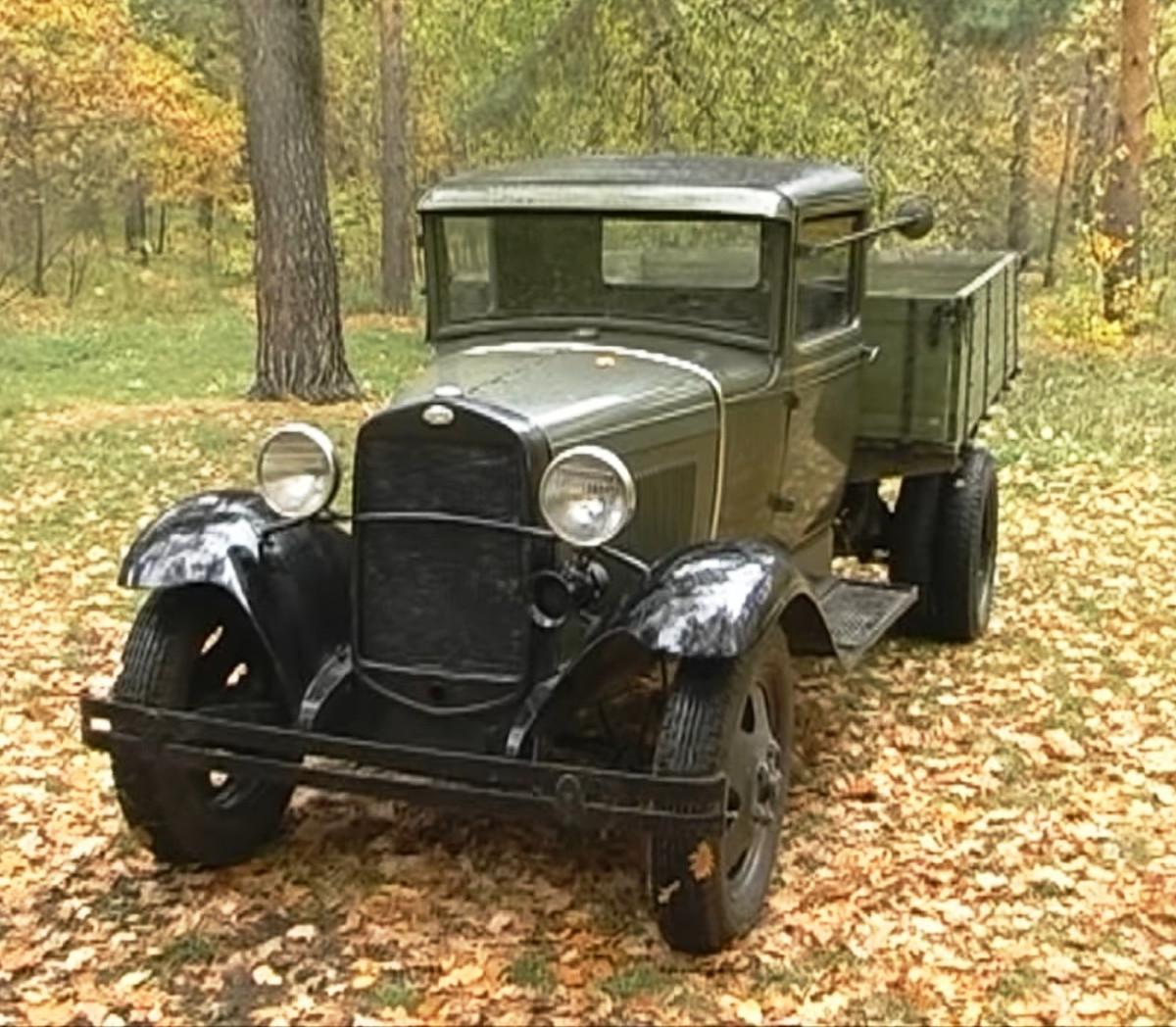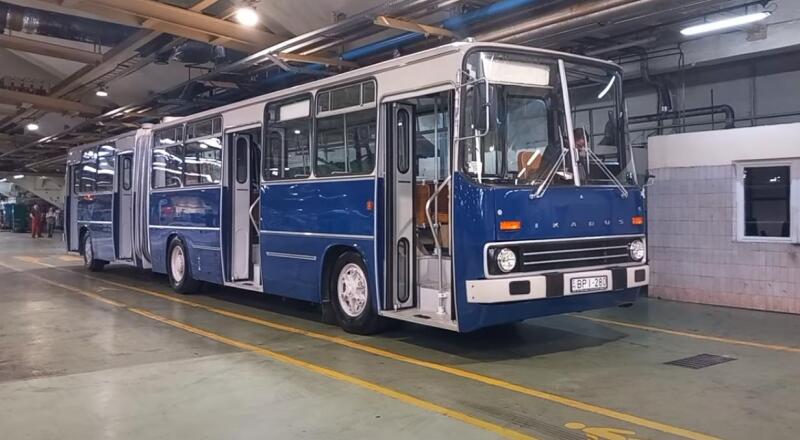It was this model that became the subject of technical assistance provided by the magnate to the Soviet automotive industry. The car, which combined simplicity, reliability and low cost, was an ideal option for a vast and poor country. Moreover, in 1928 a new Soviet brand was launched - a five-year plan for the country's economic development. To implement such a grandiose project, considerable production capacities and human resources were required. Well, and something else. Of course, reliable trucks!
The world famous Ford-AA on the Soviet assembly line
The eminent car manufacturer did not just want to help his Soviet colleagues by sending a finished car, he intended to provide technical advice in the construction of a new car production. In addition to trucks, it was planned to produce licensed passenger cars GAZ-A, which became the most massive in the USSR in the first half of the 30s. Most likely, a person who was not indifferent to poor people really wanted to help the state, which positioned itself as an "union of workers and peasants."
 Both civilians and the military were waiting for the start of truck production. Photo: youtube.com
Both civilians and the military were waiting for the start of truck production. Photo: youtube.comTo establish mass production, a huge new auto giant was required, because the capacities available in the Union were clearly not enough. But they decided not to wait a few years, but to set up small-scale production at the Gudok Oktyabrya plant in the city of Kanavino. By sea, components and parts necessary for the production of the car began to be delivered to the port of Murmansk.
At the same time, several dozen talented domestic specialists went to the American continent for an internship. By the beginning of February 1930, the first 10 Ford-AA trucks made on the Soviet assembly line were ready. At the end of next year, production of the three-axle Ford model began.
How Ford-AA turned into GAZ-AA
The construction of the plant in Nizhny Novgorod was carried out at a high pace. A new reliable and massive truck was needed by the national economy and industry like air. New 1932 began with feverish attempts to launch mass production in Nizhny as soon as possible. The first hundred spars were stamped, the components of the power units were manufactured, that's just one bad luck.
 Wooden boards that evoke memories of war films. Photo: youtube.com
Wooden boards that evoke memories of war films. Photo: youtube.comAs it often happened in Soviet times, subcontractors let us down a lot. The required amount of sheet steel did not arrive, therefore, in order not to disrupt the start of production and incur the wrath of the party elite of the country, they decided to make the cabs of the first cars from ... plywood. But the launch took place on time and, to the sounds of shouts of “Hurrah!”, On January 29, the first car, which received the name NAZ-AA, drove out of the factory gates. True, by the end of the year, the plant, following the city in which it was located, was renamed the Gorky Automobile Plant, and cars produced at 60 units per day were renamed GAZ-AA.
Also, like its prototype, the truck could carry no more than 1,5 tons of cargo at a time, which is why the name, which has become epochal, was assigned to it - “one and a half”. His appearance was a huge help in the time of grandiose construction projects that started in the Union of the 30s, which required a huge amount of freight transport.
The AMO and the Yaroslavl plant, which existed in the past decade, clearly could not satisfy the sharply increased demand for this type of transport, because by the beginning of the first five-year plan there were no more than one and a half thousand trucks in the country. The Gorky auto giant with its "lorry" arrived just in time.
Pre-war mass production of "one and a half"
The rise of the automotive industry as an industry to higher levels in the pre-war period was due to a simple and reliable truck, first produced under an American license. Even at temporary production, specialists and workers of the plant were able to get acquainted with the technical device of an American truck, assembling cars from ready-made units and parts brought by sea from America.
 Greater minimalism of the dashboard is difficult to come up with. Photo: youtube.com
Greater minimalism of the dashboard is difficult to come up with. Photo: youtube.comSurprisingly, the United States did not even have diplomatic relations with the Soviet Union at that time. As you can see, this did not prevent Ford from carrying out his plan, because his authority in society allowed him to ignore formalities. The training of our specialists at Ford factories has also become a great help. Very soon it was time to move on to our own "bread" - the design of the truck was revised and adapted to local operating conditions. Having introduced several engineering proposals for improvement, the Gorky Plant began to make its own version of the "American":
✅ reinforced steering mechanism design
✅ made stronger clutch housing
✅ added air filter
✅ made its own onboard body
Since the second year of mass production, automakers have switched to using components made in-house. A year later, the wooden cabin was replaced by a metal structure with a roof made of leatherette. Production no longer depended on imported components, so it was possible to safely increase the pace of truck production.
Updating the design and participation in the war
In the sixth year of production, a number of comments and promising proposals were selected, which it was time to put into practice. The suspension structure was strengthened, the steering mechanism was improved and the cardan shaft was modernized. But the biggest changes have taken place under the hood.
The new power unit could develop a power of 50 liters. with., which made the car ride more reliable under full load. Interestingly, a similar engine was also installed on a new model of an adjacent passenger car. They received the corresponding index "MM" and "M" (from which the name "emka" came from). The engine of the MM series was now also installed on a three-axle 2-ton modification of the GAZ-AAA.
 A passenger could enter from this side. Photo: youtube.com
A passenger could enter from this side. Photo: youtube.comReliability and prevalence have become the main reasons for the appearance of trucks in the army. At the beginning of the war, the Red Army was armed with a huge number of "one and a half" - more than 151 thousand pieces. With the outbreak of war, in order to increase the pace of production, it was necessary to resort to minimizing and simplifying the design of the truck:
✅ wooden cabin return
✅ remove one headlight
✅ installation of non-folding boards
All this made it a reliable friend of front-line drivers and a "victory truck". They were especially remembered when it came to the "road of life" - the delivery of food to besieged Leningrad. In the post-war period, "one and a half" were often installed as monuments and participated in almost every film about the war.
Post-war "one and a half" and the completion of the release
Since 1944, when the territory of the country was liberated, and people began to wait for victory and get used to an almost peaceful life, the design of the truck also began to return to its usual form. For example, they returned the headlight and front brakes. But the cabin remained wooden - iron at the end of the war and immediately after it was in great short supply.
 Even today, a test drive of this model is of great interest. Photo: youtube.com
Even today, a test drive of this model is of great interest. Photo: youtube.comHaving stood on the assembly line for more than seventeen and a half years, the famous car completed its history in Gorky on October 10, 1949. But at the facilities of the plant, known today as UAZ, it was produced until the beginning of 1951. Nevertheless, the legendary "one and a half" could be found on the roads of the country for another fifteen years, and the total production, including various modifications, did not reach a million pieces.










